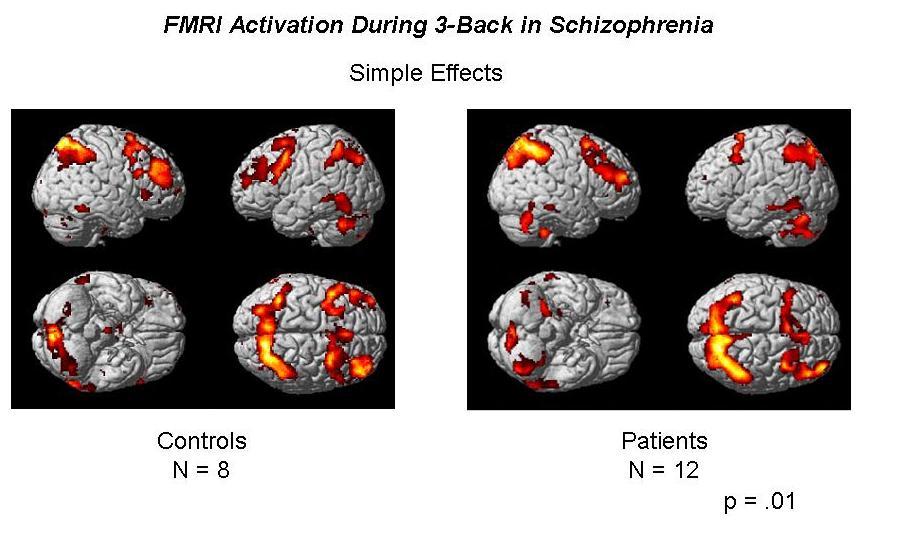Projects:NeuralSubstratesOfWorkingMemoryInSchizophrenia
Back to NA-MIC Collaborations, Dartmouth DBP 1, Harvard DBP 1, Harvard DBP 2
Neural Substrates of Working Memorry in Schizophrenia
Description
This project assesses working memory using an auditory verbal version of the n-back task paradigm. Three conditions are presented in blocks in counterbalanced order with increasing working memory load demands (0-, 1-, 2- and 3-back). We will use NAMIC tools to perform novel analyses of the relationships between brain activation and morphological data (e.g., ROI volumes, DTI) in order to improve our understanding of structure-function relationships and connectivity in schizophrenia.
Progress
To date, 16 patients with schizophrenia and 13 healthy controls have been studied. Preliminary analyses on a subgroup have been completed (see image below). Data will be available in year three.
Year Three Update
Objective: We examined the self-perception of executive functions in patients with schizophrenia, and evaluated whether the subjective integrity of working memory was related to brain activation during performance on a working memory task.
Progress: To date, data has been analyzed for 21 patients with schizophrenia and 17 healthy controls have completed the Behavior Rating Inventory of Executive Function - Adult version (BRIEF-A) Self Report form, and a subset (10 patients, 8 controls) completed an auditory-verbal 3-back working memory task while undergoing functional magnetic resonance imaging (fMRI). Preliminary analyses showed that patients reported significantly more daily problems than controls for most aspects of executive functions, the working memory scale yielding the largest effect size (partial eta-squared = 0.35), and were less accurate during the 3-back. Patients also showed the expected bilateral DLPFC hypoactivation during the task. Regression analyses revealed that subjectively better working memory functioning in daily life was associated with greater bilateral DLPFC activation in the patient group during the scan. The findings suggest that patients with schizophrenia can identify problems with their working memory in daily life, and that this perception relates to abnormality of neural circuitry subserving working memory.
Key Investigators
- Dartmouth DBP 1: Robert Roth, Laura Flashman, Jo Cara Pendergrass, Nancy Koven, Matthew Garlinghouse, Thomas McAllister, Andrew Saykin
- Harvard DBP 1: Martha Shenton
- Harvard DBP 2: Marek Kubicki
